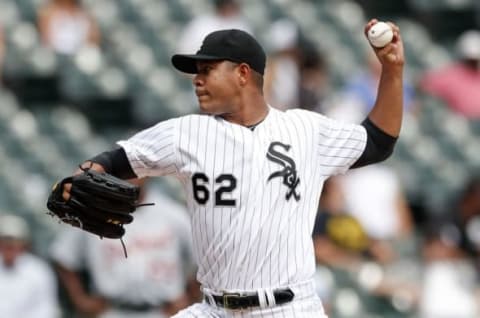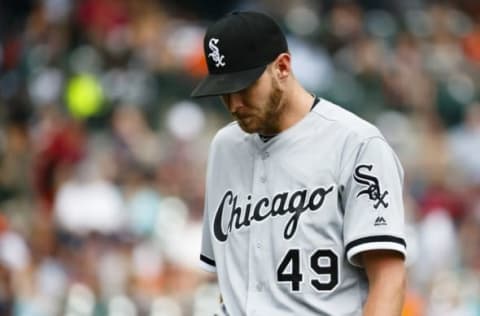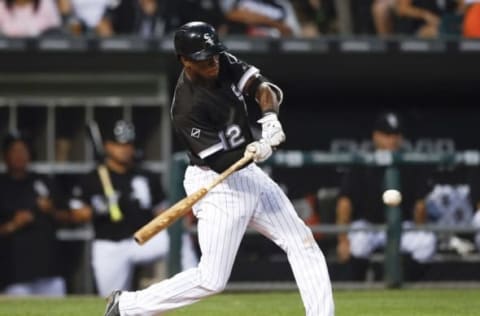Chicago White Sox: Major Takeaways From the 2016 Season


After one of the hotter starts in baseball, the Chicago White Sox’s incomplete roster could just not hold up for a 162 game season as the team failed to improve on their mediocre play from the year before.
2016 Record: 78-84, 16.5 GB in the AL Central, 11.0 GB of the Wild Card
Entering the 2016 MLB regular season, it was clear that the Chicago White Sox thought of themselves as contenders. Over the offseason, the team added all-star third baseman Todd Frazier and many other veterans on short-term deals. The front office also went through another player movement cycle without trading away their ace Chris Sale.
It’s understandable why the White Sox would think that they had the roster to at least challenge for a postseason spot. After finishing last year with 76 wins, it seemed like the ballclub was slightly improved.
In addition to adding the reigning home run derby champion, skipper Robin Ventura could also toss out a lineup that included a solid first baseman in Jose Abreu and a couple of talented outfielders in Adam Eaton and Melky Cabrera. Chicago also added veterans Austin Jackson and Jimmy Rollins to help supplement their roster.
However, the real strength of the team was in their starting pitching. Sale was entering the season as a favorite for the AL Cy Young. In addition to having one of the best starters in baseball, the White Sox also expected solid contributions from two more left handers in Jose Quintana and 2014 first round pick Carlos Rodon.
Everything seemed to be coming together right out of the gate as the rotation, including journeyman Mat Latos, were just not giving up any runs. The White Sox started the year with a record of 17-8 in the month of April. Unfortunately, this would be the high point of their season.
Latos came back to earth in a hurry, while pitching reinforcements weren’t getting the job done. They had their moments offensively, but it wasn’t good enough to shield the other glaring weaknesses on their squad.
After being on the periphery of the playoff race for most of the year, the Sox just couldn’t muster any run to put any pressure on teams that were clearly ahead of them in the wild card race. This resulted in their fourth consecutive season being under .500.
So what can the White Sox takeaway from their 2016 season? We’ll run through the biggest revelations now.

A Premier Pitch Combo
Everyone who even remotely follows baseball knows that Chris Sale can throw with the best of them. At just 27 years old going into the regular season, Sale had already finished in the top five of the AL Cy Young voting three different times. The lanky left-hander had also never finished a season with an ERA of over 3.45, while also striking out at least one batter per inning in every year that he has pitched in the majors.
Knowing this, it was expected that Sale would do that once again, and for the most part, he was really good…not great…but still really good. Sale finished the year with an ERA of 3.34, which was an improvement over last season. He also kept his walk numbers low and struck out 9.3 batters per nine innings of work. The ace did utilize a different pitching strategy this season as he conserved his arm a little bit more than in years past. After averaging around 95 mph on his fastball in 2015, he did not throw as hard this go around, averaging a fastball velocity of 92.8. It’s still a good fastball, but it just wasn’t that one we have grown accustomed to when Sale toes the rubber.
The second part of the pitching dominant pitching duo emerged in Jose Quintana. The fellow 27 year-old performed just as well as, if not better than Sale in some regards. His ERA was lower (3.20) and he allowed slightly less home runs throughout the entirety of the regular season. Quietly, Quintana has never finished a season with an ERA above 3.51 in the past four years and he’s been improving on that number in every season since his major league debut.
Consistent, level-headed and not using many tricks, he will certainly continue to be a perfect complement to the fiery Sale for the next few seasons, which actually perfectly leads into the next takeaway…

Lack of Trade Activity Stalls Rebuild
Obviously, having two controllable top of the rotation starters and a losing record, the White Sox were recently mentioned in trade rumors regarding their top two lefties. With there not being any clear top-of-the-rotation starting pitchers available on the trade block this season, as there were with David Price and Cole Hamels in 2015, contenders were interested in how much they would have to give up to make the White Sox think about making a deal.
Around the time rumors started heavily swirling in the Windy City, Chicago was on the outskirts of the playoff race and clearly not destined to make any move up the standings. However, the trade deadline passed without any trade seeming to get close. There were enough clubs that had the farm system to get a deal done. Boston and Texas among others were looked at as being the serious players in the Sale and Quintana sweepstakes, but nothing came of the supposed talks.
In fact, White Sox General Manager Rick Hahn stated that Chris Sale never had expressed a desire to leave the organization, even during his uniform tirade.
“At no point did he express a desire not to be a Chicago White Sox,” the GM said.
(Quote from Today’s Knuckleball)
Now with both staying at least for the time being, it should signal to the rest of the baseball world that the team is looking to remain competitive in 2017. Chicago also refused to deal Todd Frazier, Melky Cabrera or closer David Robertson. With all these pieces now primed to return at least for now, the White Sox have signaled to their fanbase that they are not going to let the last few years dictate a rebuild. There are many different opinions of what the club should actually do, but the only opinion that matters, at this point, is that of the front office.
Clearly, with the way they handled the trade deadline, Rick Hahn, Kenny Williams and company believe that this roster is salvageable enough for there to be real growth over the offseason and into 2017.

James Shields Trade Was a Huge Flop
Early in the season it looked like the White Sox were going to be competing for the postseason late into the season. Their pitching was spectacular in the early goings and the team was looking to keep their run going by trading with the San Diego Padres for James Shields.
At 34 years old, Shields was once a solid starting option who at his highest points could be a number two in a rotation. However, after signing with the Padres after the 2014 season, things just seemed a bit off for the veteran right-hander. His velocity decreased while his earned run average was coming up. He wasn’t bad in 2015, pitching to a 3.91 ERA in 33 starts. He also started out the 2016 campaign in fairly solid fashion. He went at least six innings in every start in San Diego, except for his last one before he was sent to the White Sox. His ERA with the Padres sat at 4.28.
However, once Shields put on that different uniform, all of his flaws suddenly appeared greater than ever. He allowed a combined 22 earned runs in his first three outings for the White Sox. He was giving up a ton of hits, striking out very few and allowing more free passes than any starter would like to.
Chicago plummeted just as Shields did. Instead of bringing stability to their rotation, he was more of a nuisance for the remainder of 2016. The White Sox never truly competed. They dealt away a decent young pitcher in Erik Johnson for Shields and they are probably going to have to pay a lot more money to their June trade acquisition in the coming years.
They’ll have to pay half of Shields’ $44 million salary for over the next two years. So not only did Shields not produce for the White Sox (ERA of 6.77 with Chicago), the organization is also going to have to pay the former all-star much more than any team would want to. It’s a true double whammy, albeit a self-inflicted double whammy.

Tim Anderson is the Shortstop of the Future
Most who follow baseball knew that the Jimmy Rollins signing was to just keep the seat warm until the White Sox’s top prospect Tim Anderson was ready to make the jump to the majors.
A former 17th overall pick in 2013, many people had high opinions of the shortstop. Anderson came into the season ranked as the 45th best prospect in baseball, according to Baseball America.
The 23 year-old started off hot at Triple-A, as he recorded a batting average of over .300, while adding four homers in 55 games in the minor leagues in 2016. This was enough for the White Sox to think he could handle major league pitching and the talented infielder didn’t disappoint.
More from Call to the Pen
- Philadelphia Phillies, ready for a stretch run, bomb St. Louis Cardinals
- Philadelphia Phillies: The 4 players on the franchise’s Mount Rushmore
- Boston Red Sox fans should be upset over Mookie Betts’ comment
- Analyzing the Boston Red Sox trade for Dave Henderson and Spike Owen
- 2023 MLB postseason likely to have a strange look without Yankees, Red Sox, Cardinals
At 6’1”, 185 lbs. Anderson has all the tools to be an all-around shortstop. We saw him start to show his unique abilities early on and then the shortstop began to lock in as the season went on. Anderson finished the year with a slash line of .283/.306/.432/.738. The rookie also added nine home runs in the 99 games he appeared in.
The now former top prospect is by no means a complete player, he needs to increase his plate discipline and produce more walks. But he showed enough that the White Sox front office can feel confident that he can building block for an organization that is looking to find some younger players to carry the load offensively. The White Sox did rely on some older players on short-term deals for a large portion of 2016.
Overall, Anderson’s development and immediate production may have been the most encouraging development in a season that was much of the same for White Sox fans.
Next: Florida Panthers Honor Fernandez
What did you think of the White Sox’s 2016 season? Share your thoughts in the comments below.